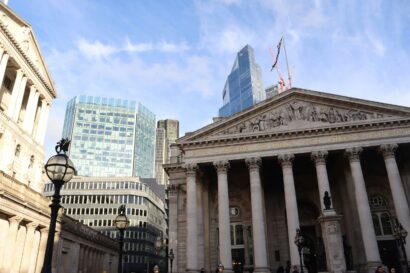AG INSIGHT | 25/04/2018
Green infrastructure: An ambitious global investment

Michael Wilkins, Head of Sustainable Finance at S&P Global Ratings, discusses the importance of financing green infrastructure projects with both public and private capital.
Under the terms of the Paris Agreement, the world has agreed to fight global warming. The primary aim is to keep temperatures from rising 2˚C above pre-industrial levels. To achieve this, green infrastructure needs significant investment: with estimates around US$90 trillion between 2015 and 2030. Though the green finance market continues to grow at a remarkable pace (we estimate US$200 billion of green bond issuance in 2018), it still isn’t enough to finance green infrastructure ambitions entirely. So, where will the funding come from?
Sovereign issuance soars
First, we expect global political support for green bond issuance to further ramp up in 2018. Helped by increasing regulatory support and more private capital, these could come in the form of new sovereign and sub-sovereign issuance.
Sovereign issuance has sharply increased since Poland issued the first sovereign green bond in 2016 – with the market reaching US$11 billion in the following year, including issuance from France, Fiji and Nigeria. So far in 2018, Belgium and Indonesia have joined this group of sovereign green bond issuers. Morocco and possibly Sweden are now poised to follow suit. So on the back of countries’ growing green commitments – as highlighted by various reforms enacted in this direction by China, France, Mexico, and Switzerland – we expect sovereign green bonds to be more popular in the future.
Yet, sovereign green bonds alone will not suffice. This is because, in our view, it is very unlikely that governments will be willing – or, indeed, able – to risk deteriorating their creditworthiness by stretching their budgets and debt burdens to accommodate Paris Agreement climate target costs. And though political motivations (such as wishing to appear progressive to the international community) may be a consideration, these alone may not be persuasive. So, to meet ambitious climate change targets laid out in the Paris Agreement, private sector involvement will likely be necessary.
Enabling private finance
However, this presents another challenge: enabling private capital to flow to mitigation and adaptation initiative investments. In the U.K. specifically, we believe that the structural changes that arise following Brexit could present an opportunity for the government to not only improve but exceed environmental standards in reduced timeframes. This, we believe, could even incentivise green investment. That said, it remains possible that environmental ambitions could instead be held back. So, with the terms of Brexit yet to be finalised, it is a case of wait-and-see.
There are many other initiatives working to mobilise private funds into climate change projects globally. For example, the Green Climate Fund, set up by the UN Framework Convention on Climate Change, has established a private sector facility that encourages institutional investors and corporations to invest in the sector – or co-invest with the fund. Bank of America Merrill Lynch has launched the Catalytic Finance Initiative. This is a consortium of leading financial institutions that pledges to direct US$8 billion into high-impact projects within the field of sustainability by increasing access to funding.
Meanwhile, the Global Innovation Lab for Climate Finance is another initiative aimed at driving billions of dollars of private investment to the low-carbon economy – through the development of innovative financial instruments that are specifically designed to unlock finance for energy efficiency, renewable energy, sustainable transport, climate smart agriculture, and curbing deforestation.
All of these initiatives aim to reduce the barriers that currently limit the level of private capital flowing to climate change adaptation and mitigation projects. And, as such, they may be critical to narrowing the gap between the need for green infrastructure investment and governments’ willingness (and ability) to increase budgets and debt burdens.
Climate disclosure counts
Yet, in the attempt to mobilise more private capital for green projects, another significant factor to consider is environmental risk reporting and, in turn, mitigation. The disclosure of environmental risk (one third of ESG: environmental, social, and governance risk) allows investors to evaluate a company’s performance in terms of sustainable impact. In turn, this provides transparency and visibility on exposure to climate risk – which is increasingly pertinent given the continuation of global warming and increase in severe weather events around the globe.
Knowledge about ESG risk exposure is particularly relevant for the financing of adaptation infrastructure projects. Without immediate monetary returns, the need to fortify infrastructure can be unclear until damage occurs. Enhanced environmental disclosure can help to track where adaptation is most needed, and reveal the value of financing these kinds of projects.
What’s clear, then, is that green infrastructure projects have many financing vehicles available to them. Ultimately, enabling both green public and green private finance – as well as facilitating enhanced environmental disclosure – will be crucial for mitigation and adaptation infrastructure development going forward.
Michael Wilkins is the Head of Sustainable Finance at S&P Global Ratings. S&P Global Ratings is aware of the perceived need for increased green finance, in order to fund both mitigation and adaptation infrastructure projects in the face of global warming. To read some of S&P Global Ratings’ research on green infrastructure, click here.
See here to read the Aldersgate Group’s report on green finance Towards the new normal: increasing investment in the UK’s green infrastructure.



